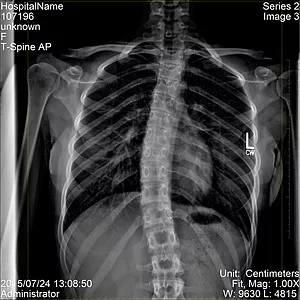Image processing vastly changes the quality of an image. No digital image can be better than the worst of the detector, image processing, and monitor being used. What makes a “good” image? There are several factors that create a good, usable diagnostic image.
• Spatial resolution
• High contrast
• Correct dynamic range
• No distortion or gaps
• No dead pixels
• High Signal to Noise ratio
Spatial resolution is the number of pixels in a given area expressed as either #, x#, or total number of pixels. In practice, spatial resolution is also limited by the patient’s movement during exposure. According to Radiography Operations Consulting (ROC), most diagnostic imaging information is encoded in frequencies between 0 and 2 lp/mm, which is considered clinically relevant resolution. Contrast resolution is the number of shades of grey that can be displayed. This is typically a 12-16 range for digital imaging systems.
Correct dynamic range is also an important characteristic of achieving a good image. Dynamic range is the range of exposure at which you can tell small differences in shade apart. Digital imaging has significant advantage over film in this regard because the dynamic range of film is fixed whereas dynamic range is adjustable in digital.
A pixel is considered to be a tiny area of illumination on a display screen, one of many from which an image is composed. This is the smallest unit of a digital image that can be displayed and represented on a digital display device. As one would think, a dead pixel is not desirable. In flat panel detectors, dead pixels occur individually in blocks or in lines, depending on how the detector components are organized. Due to their small size, however, dead pixels do not ruin a digital image if they are not grouped together or identified by the image processing software being used.
Lastly, a high signal-to-noise (SNR) ratio contributes to making a good image. SNR is a measure of true signal to noise; that is, reflecting actual anatomy to random quantum mottle. Each modality has its own source of noise and, as such, there are modality-specific techniques for SNR maximization. All digital detectors will produce noise when a small, random current is mistaken for the conversion of light. The more real signal you have, the less this random noise will affect the image.


